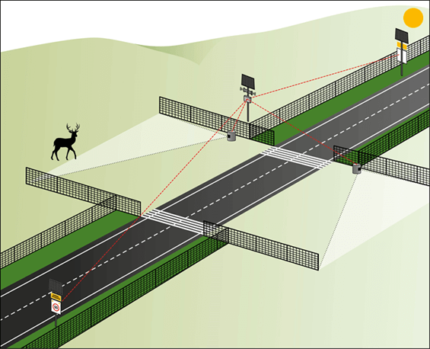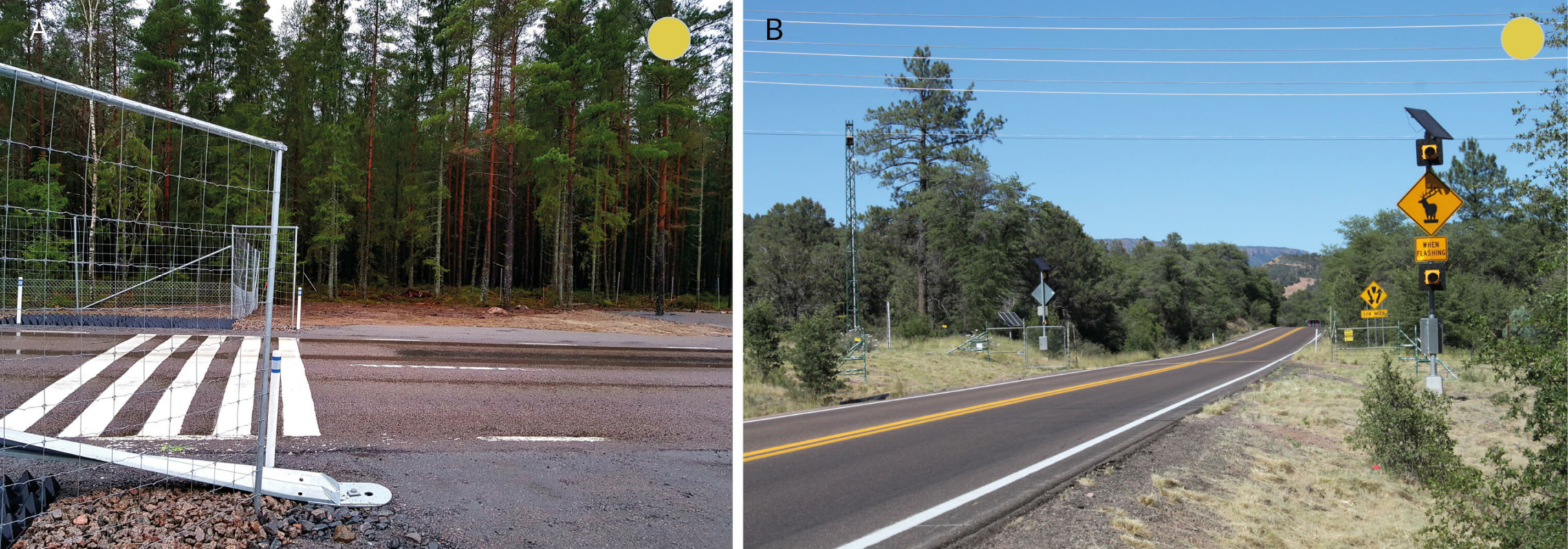For areas where under or overpasses cannot be built (i.e., due to topographic limitations) level crossings, also known as ‘at-grade fauna passages’, may be an alternative to facilitate ungulates crossing. Theoretically, these crossings lead large mammals across the road surface and warn drivers when animals are detected entering the passage area. Level crossings thus require an electronic animal detection system (ADS) and a driver warning system.
Current effectiveness evidences are limited to only some Nordic countries where level crossings are proven effective only on roads with up to 6,000 vehicles per day and only for larger mammals such as deer and wild boar. They are not suitable for smaller species or on busy roads with high speed limits. The system is also installed in some railways in France where their effectiveness is under evaluation.
Level crossings are suitable only on fenced infrastructure. They require fences to prevent animals accessing the road or railway outside the detection area where no driver warning would be triggered (Figure 5.5.57). While more research is needed, the first trials conducted have resulted in the following recommendations:
- At the passage, a 20 m fence perpendicular to the road or railway must be installed to provide a corridor that directs animals across the detection zone.
- The width of the open crossing section should not be smaller than 30 m to minimize the risk of animals walking along the infrastructure within the fencing.
- Road painting may be installed to delineate the crossing, and visually direct animals across the road or railway (Figure 5.5.58A). White lines can be painted on the road to assist drivers see animals (Figure 5.5.59A)
- Electrified mats are useful to avoid animals to leave the area designated for crossing and walk onto the carriageway.
- To help prevent animals walking onto the shoulders of the infrastructure, uneven surfaces (i.e., crushed stones) (Figure 5.5.58B) or rubber cone rugs (Figure 5.5.58B and Figure 5.5.59A) may be placed between the fence and the carriageway.
- Warning signs activated by ADS must be installed to warn drivers when animals are nearby or on the carriageway (Figure 5.5.59B; see Section 5.3 – Driver warnings).
- Speed limits in areas with level crossings are strongly recommended to increase traffic safety. Maximum speed in these areas should never exceed 80 km/h, although a safer speed limit is 50 km/h.


